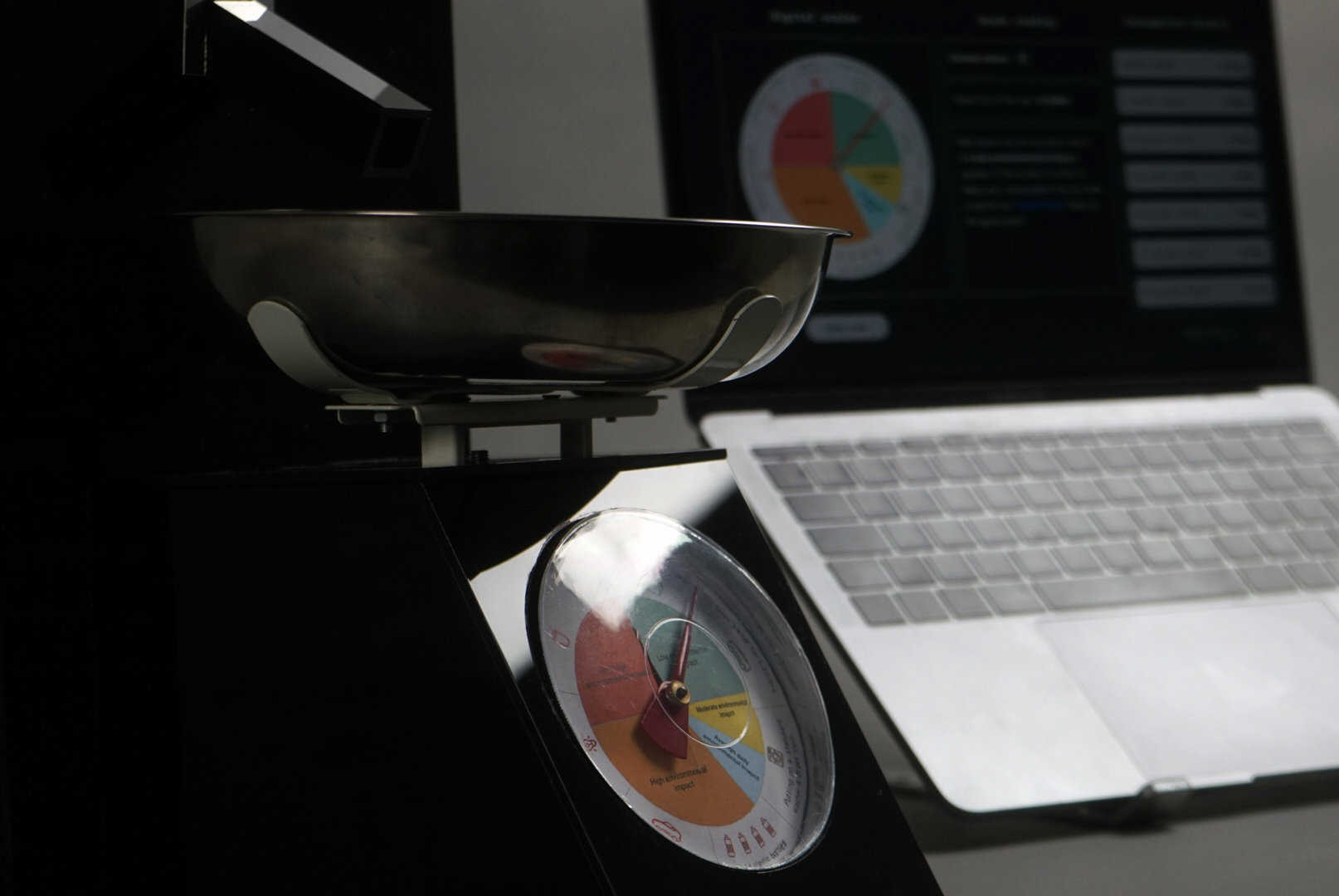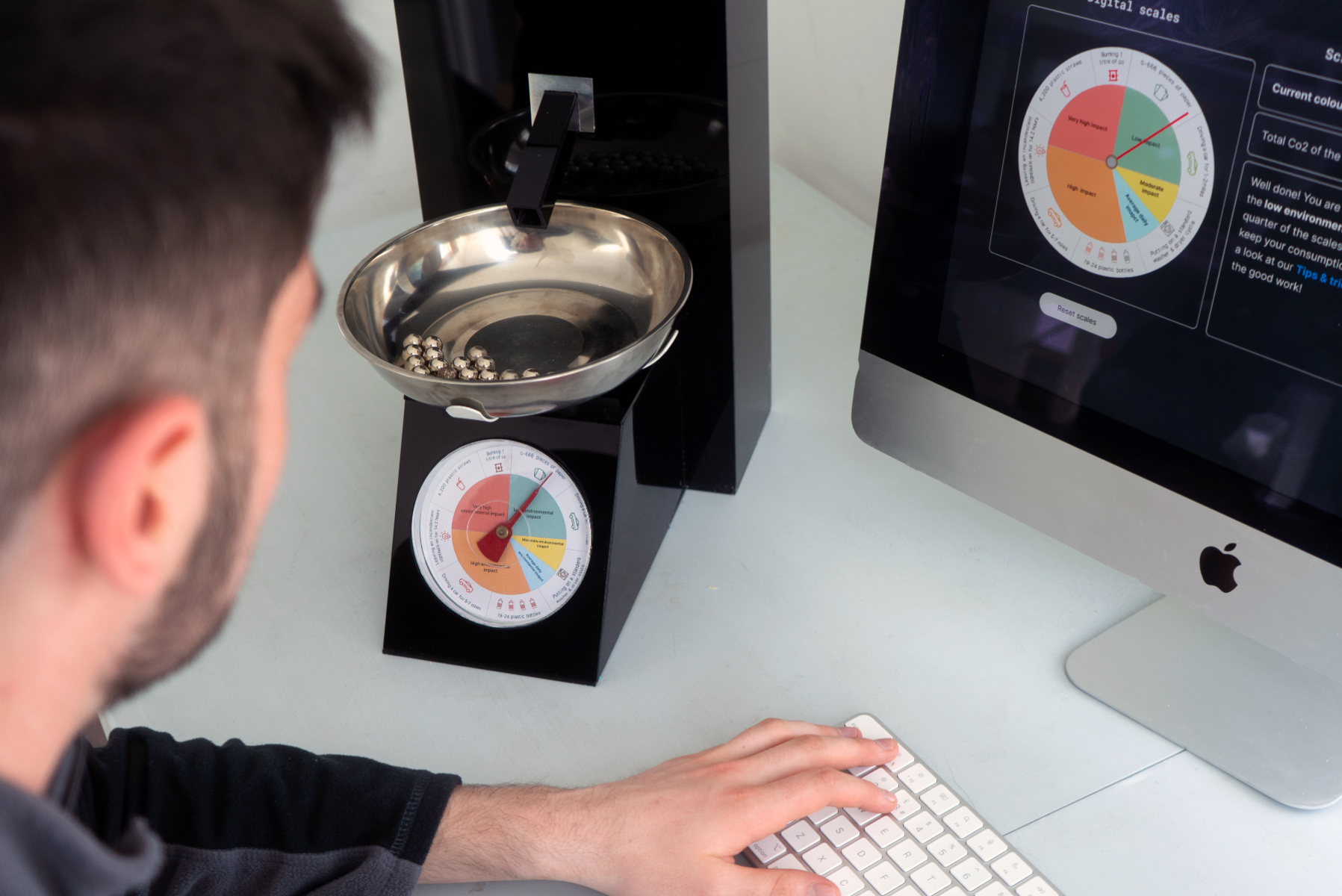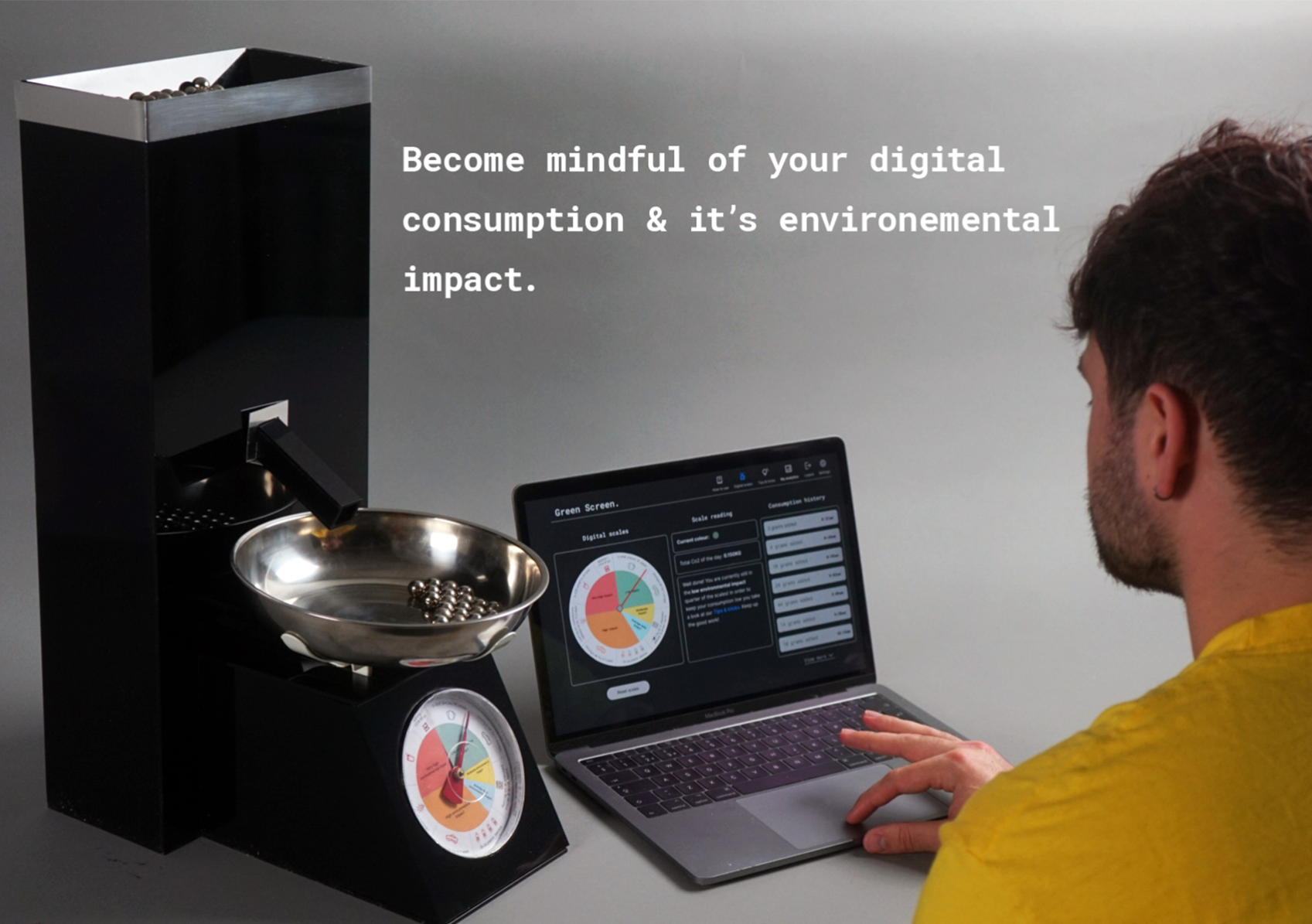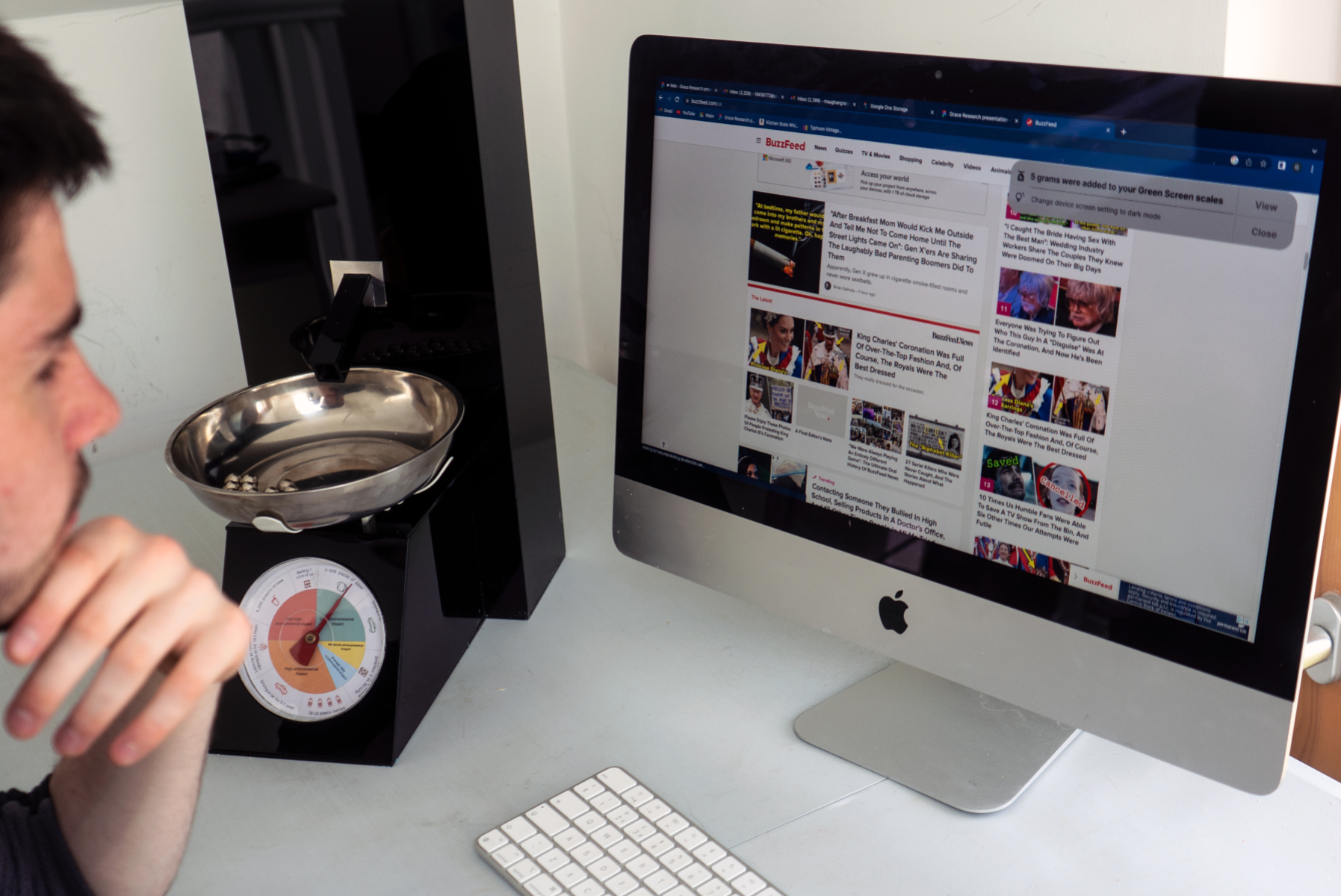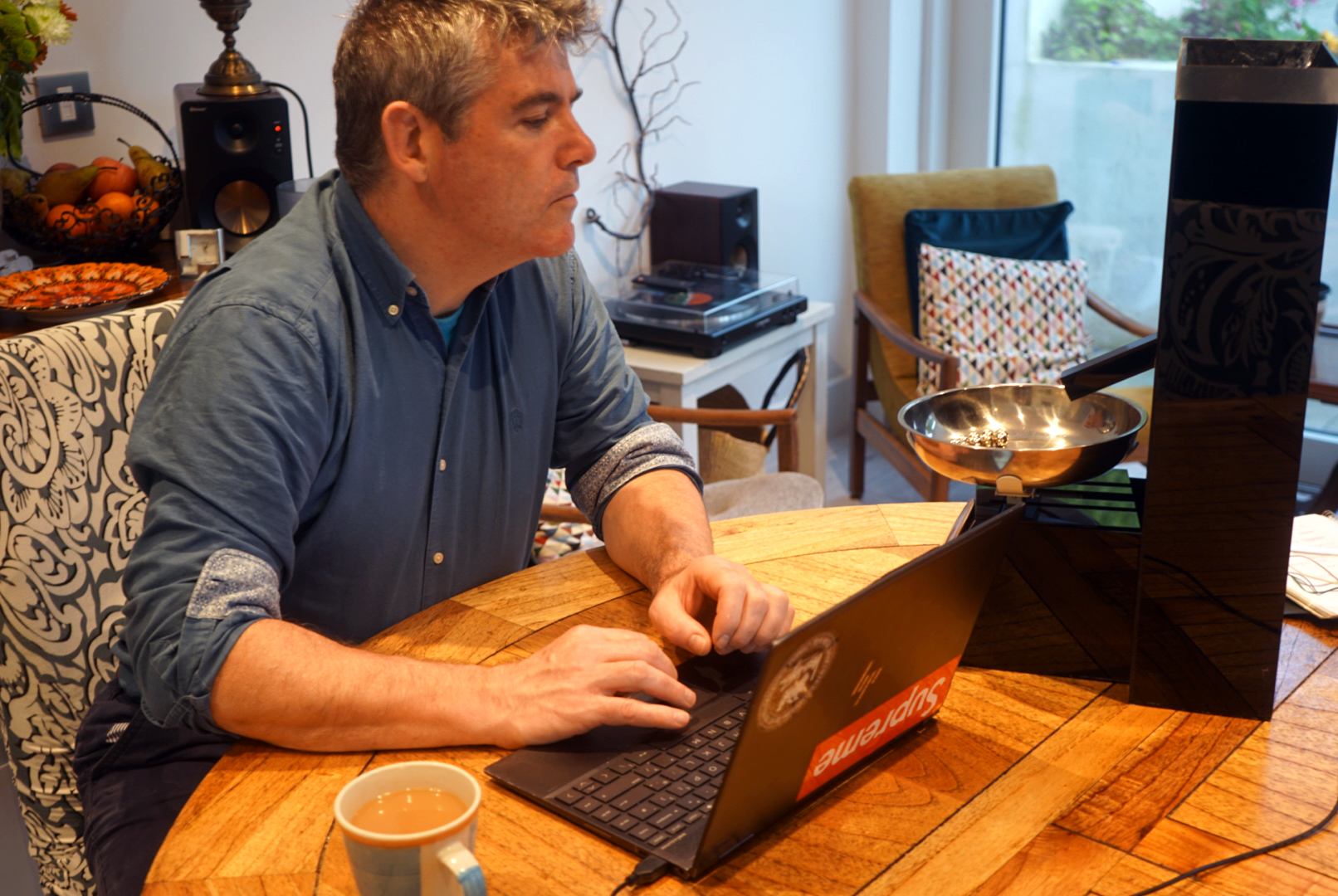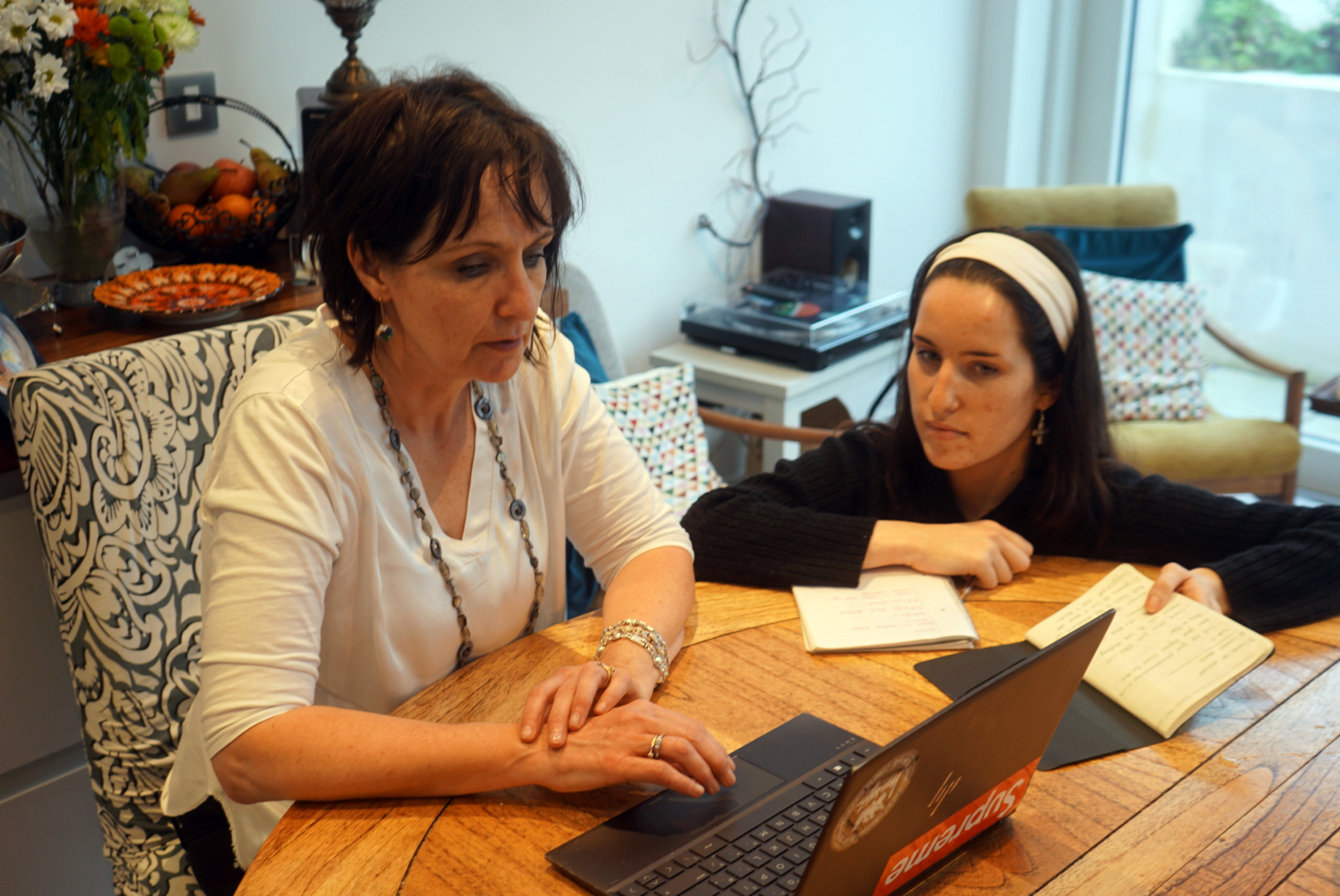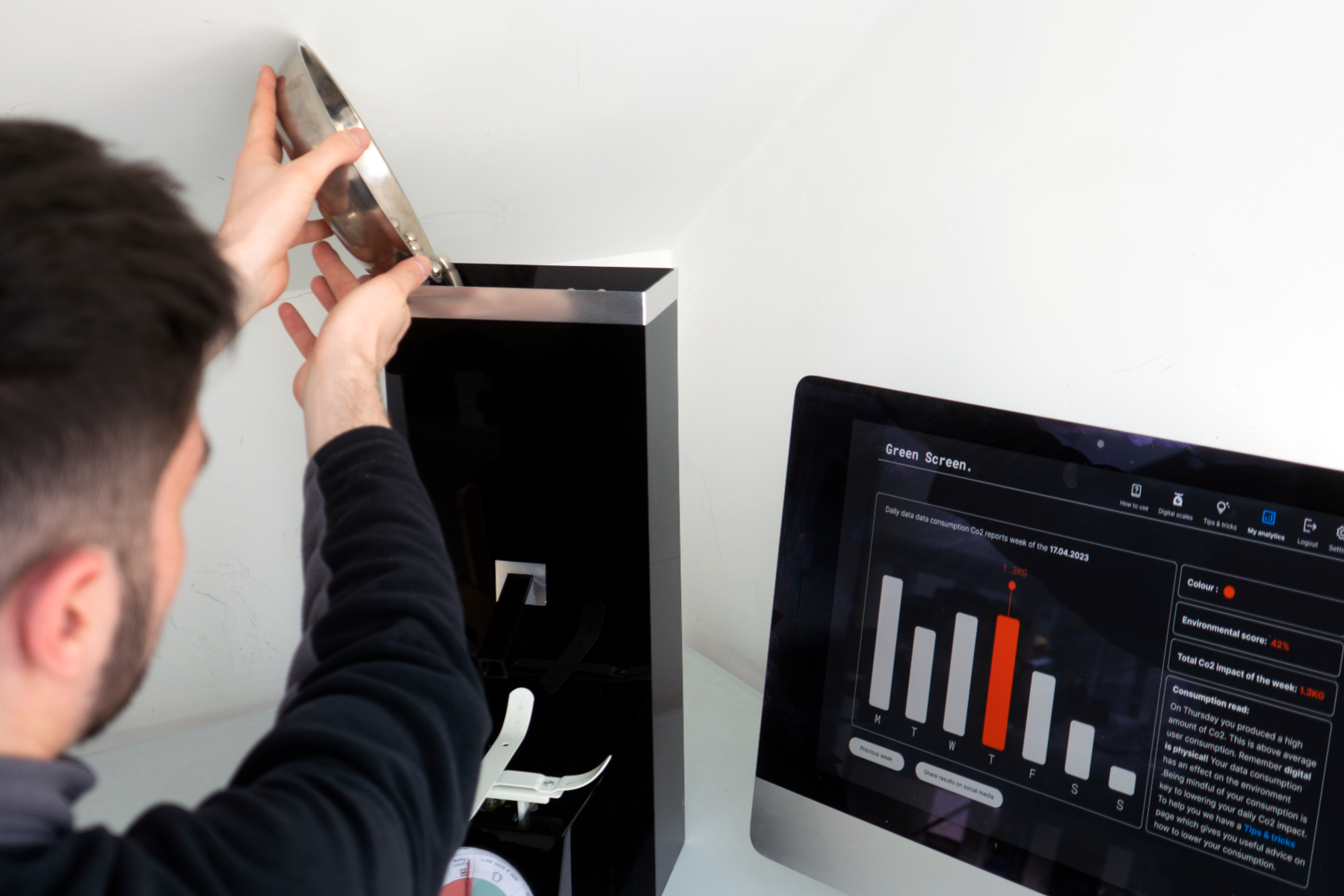Grace maughan
Interaction design
National College of Art and Design
Graduates: 2023
Specialisms: Interaction Design / UX Design / Digital / Visual Comm / Film
My location: Dublin, Ireland
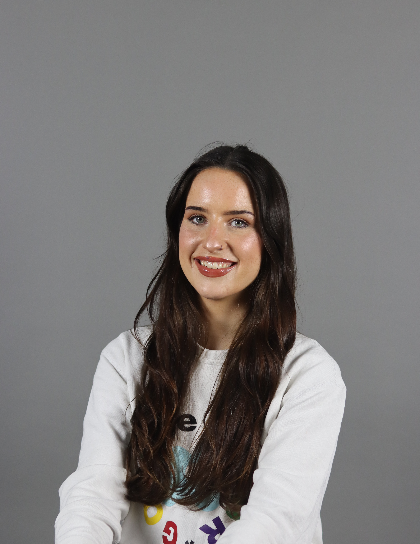
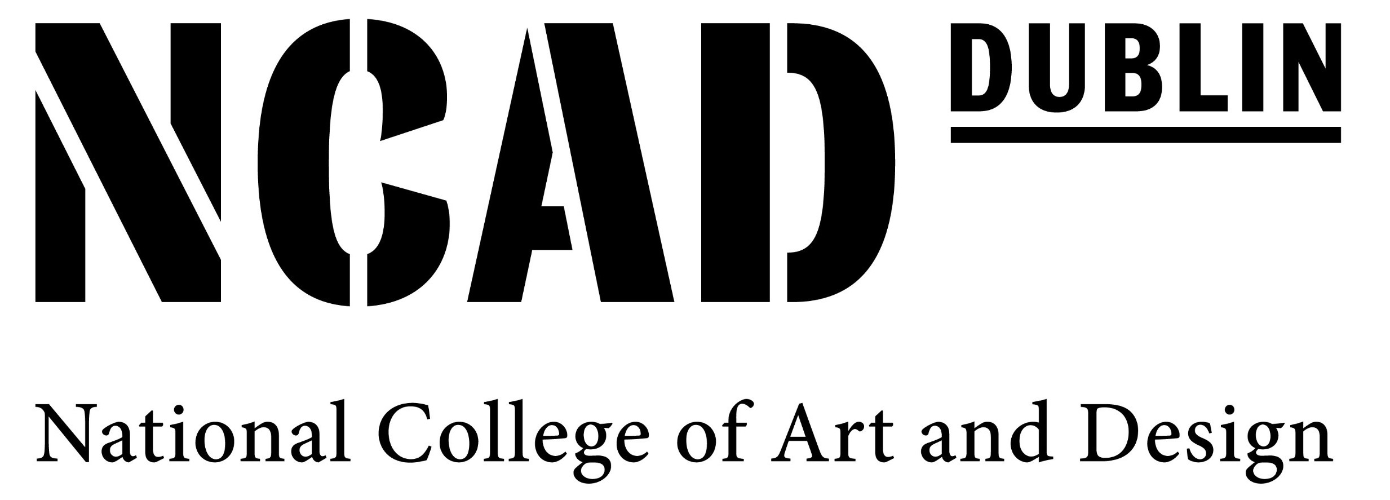
Grace maughan

First Name: Grace
Last Name: maughan
University / College: National College of Art and Design
Course / Program: Interaction design
Graduates: 2023
Specialisms: Interaction Design / UX Design / Digital / Visual Comm / Film
My Location: Dublin, Ireland
Website: Click To See Website
About
Although the tech industry plans to implement renewable energy, the internet itself generates up to 1 billion tons of greenhouse gases every year, 1.2% more emissions than the entire aviation industry. However, we typically think of the internet as an immaterial space and often engage in mindless consumption of data without considering the environmental impact. My project aims to change user perception, improve individual environmental impact and challenge how we interact with digital services. It combines experiential and behavioural design to provoke thoughtful engagement. ‘Green Screen’ presents two materialisations of environmental impact while the user is engaged in data consumption; a product that uses a physical scale to represent the weight of CO2 emissions being generated, and a digital space with on-screen pop-ups and personal anayltics that offer practical tips and tricks aimed at reducing wasteful data consumption and creating new and mindful online behaviours. ‘Green screen’ offers a tangible experience that links the digital world with the physical one, equating digital actions with everyday activities and objects widely known to have environmental consequences such as the Co2 impact of driving a car or using plastic straws. By employing behavioural design techniques and constantly evaluating the effectiveness of the design, Green Screen removes the user from their mindless consumption and reminds them of real world environmental impact. I wanted to create an experience that leaves a lasting impression on the user, representing how digital is in fact physical and making that into a memorable and tangible experience. The resulting impact of the product was a newfound sense of awareness when using digital devices. When asked days after full evaluations of the product had taken place; 'Have you thought about your digital consumption since using Green Screen?', every answer was yes. Green Screen not only created awareness when using it with the user's digital device, it also left a lasting sense of mindfulness days after the product was used. By informing the users of ways in which they can reduce their consumption and giving them a clear indication of when and where they consume the most data, the user can work towards lowering their overall usage while also not infringing too heavily on the overall user experience of the digital service they are using. By using engaging designs such as pop-ups, noise, physical interaction and visuals, the user is taken out of their mindless consumption and made aware of the impact that their customary digital usage has on the environment. By equating the user's digital usage with tangible environmentally taxing objects and actions, the user can get a better sense of the impact they are having digitally. As a design discipline that acts as a catalyst of behaviour change, I think that we must look at the problems we cause as designers and engineers within our own industry and what effect that is having on our users. By creating an awareness of this environmental issue, we can create a demand for change across the IT industry and create a greener future for tech.
Competitions

